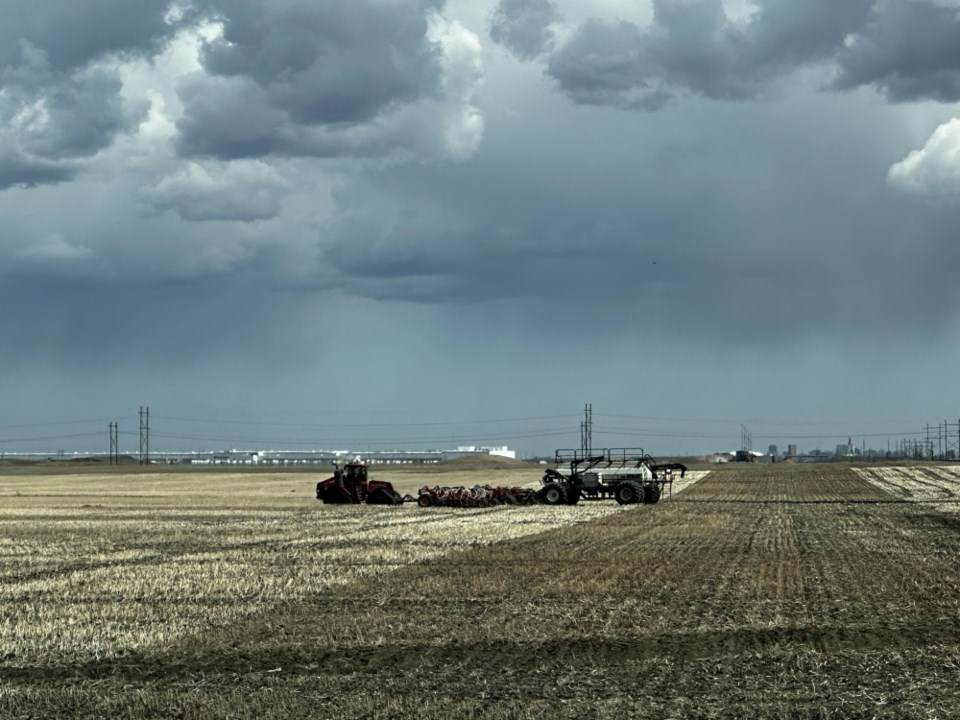Cereals
• Winter wheat and fall rye survival looks average to above-average in most regions.
• Spring wheat, oat, and barley acres are almost complete in the Southwest, Central, Eastern and Interlake Regions. Seeding progressed rapidly in the past week.
• Corn planting saw a major jump this week in the Central, Eastern, and Interlake regions. The earliest planted acres are expected to emerge next week.
Oilseeds • Canola seeding has just started. Sunflowers are over halfway seeded in most regions, and flax is halfway seeded in Central and Interlake regions.
Pulses and Soybeans • Field peas are almost finished in all regions, with the Northwest sitting at 65% seeded. • Soybean seeding is 25% complete across the province. • A few dry bean acres have been planted in the Central region.
Southwest
Strong winds and high temperatures are rapidly drying out the topsoil. Smoky conditions persist across the region due to recent wildfires in the northern parts of the province. Winter wheat and fall rye are progressing well, benefitting from winter moisture and the warm growing conditions. Most fields are beginning to tiller. Several producers have already completed broadleaf weed control, and overall, the winter crops are in average to above-average condition. Spring wheat seeding is approximately 60–65% complete. Early seeded wheat has emerged and is in the one to two leaf stage. Barley and oat seeding is about 40% complete, with only a few fields beginning to emerge. Corn seeding is estimated at 15–20% complete. Peas are about 75% seeded, and early seeded fields have already emerged. Soybean planting has begun in some areas and is approximately 5–10% complete. A few producers have also started planting canola, primarily in the southern portion of the region. However, dry conditions have led many to consider delaying seeding until rain arrives. Currently, less than 5% of canola acres have been planted. No flax has been seeded yet. Sunflowers in the southern region are about 20% planted. Producers continue with pre-seeding burn-off operations when wind conditions allow. Many are expressing concern over the dry soil conditions, noting that any tillage further dries the soil to the same depth as the tillage. As a result, a significant number of seeds are being sown into dry soil. There is also ongoing discussion about delaying canola planting until rainfall occurs. No major insect or disease issues have been reported so far.
Northwest
Spring seeding operations progressed quickly this past week. A mix of progress with spring wheat, field peas, soybeans and canola all being put in the ground. In general, the Swan Valley region is more advanced than the remainder of the region due to drier soil conditions this spring. Weeds and volunteers continue to grow. Pre-seed burn-offs are occurring. Hot, dry and windy conditions continue to dry out fields. Wildfires in The Pas are a concern. Many other locations across the region are at high risk and have fire bans in place. Spring wheat seeding is most advanced in the Swan Valley region, and earliest seeded crops are emerging. Seeding is nicely progressing across the rest of the region including Dauphin/Ste. Rose, The Pas and Roblin. Overall progress across the region is approximately 50%. Field pea seeding is approximately 60-70% complete across the region. Earliest seeded fields are just starting to emerge. Soybean seeding is progressing quickly and is approximately 40% complete. Canola seeding has begun in some areas and is approximately 10-15% complete.
(Manitoba Agriculture news release)



